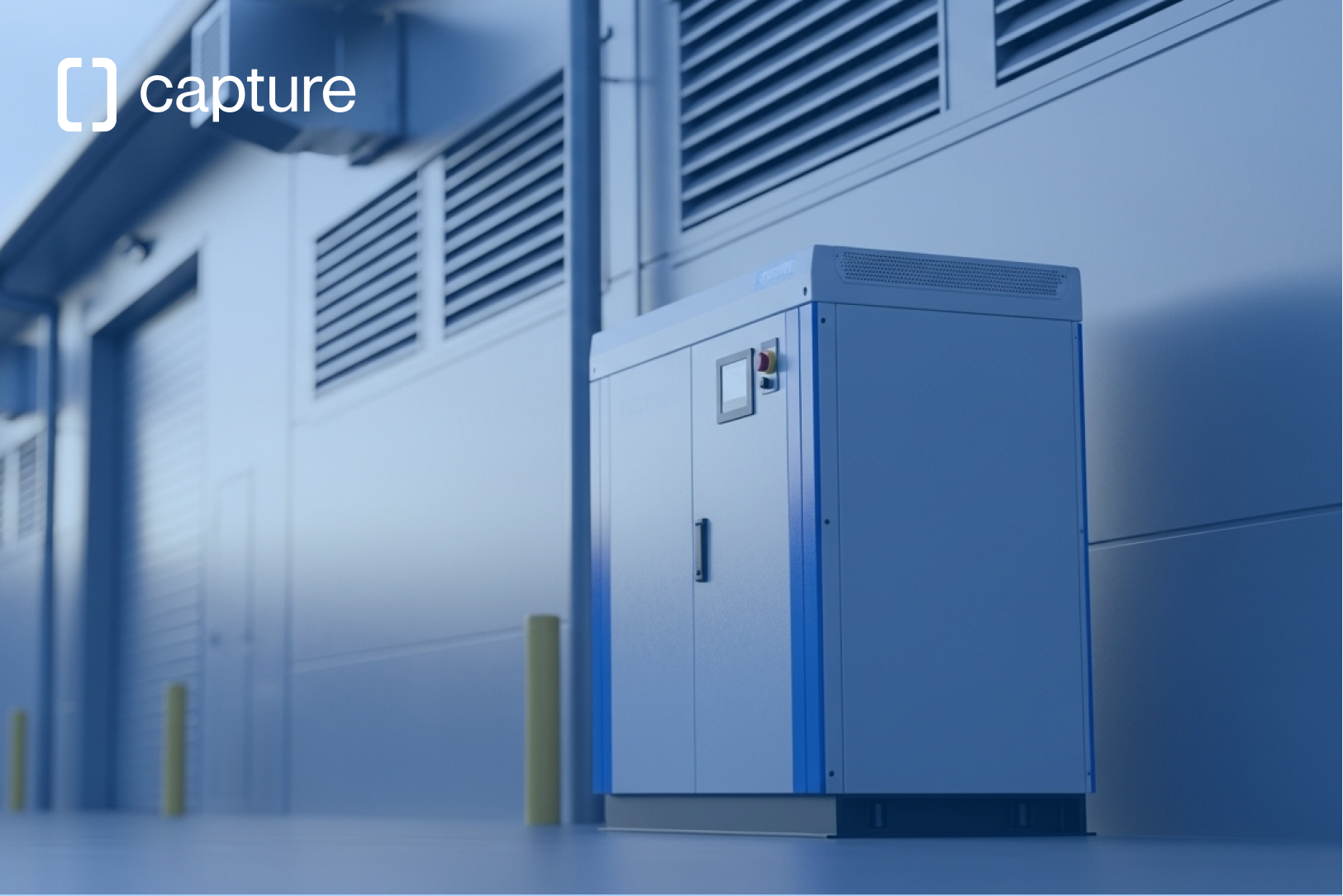C&I batteries: The key to restore UK industrial competitiveness
UK businesses are facing some of the highest energy costs in Europe - but the solution might already exist. While residential and grid-scale batteries have taken off, commercial and industrial (C&I) batteries remain an untapped opportunity to restore competitiveness and resilience across British industry.

The topic in a nutshell
Industrial electricity prices in Britain are still 75% above 2021 levels, leaving many businesses struggling to grow.
They deliver faster deployment and better returns than grid-scale batteries, cutting costs while supporting the grid.
Hardware, software and tariffs combined to finally unlock the C&I battery opportunity.
UK businesses pay more for electricity than in any other country in Europe. It does not have to be this way.
The gas crisis of 2022 may seem a distant memory, but Commercial & Industrial (C&I) electricity bills are still significantly higher than pre-Ukraine war levels. With the average business in Britain paying 75% more for electricity in 2025 than in 2021, it’s no wonder 58% of business leaders feel energy costs are having a negative effect on their operations and ability to grow.
The upcoming Autumn Budget is likely to pile further pressure on British businesses, making the need for affordable electricity even more pressing.
Battery storage is uniquely placed to deliver this much-needed cost reduction to UK businesses.
Residential batteries have been on the rise – now is the time for C&I
Battery storage has taken off across Britain, from home to massive grid-scale projects. Homeowners love their batteries, as they allow them to not only store excess solar but also to power their homes from off-peak electricity, trade back electricity to the grid at peak hours, and to keep the lights on in case of a power cut. Meanwhile, grid-scale batteries have become critical to balancing the UK’s power grid, with The Economist calling them “clean energy’s next trillion-dollar business.” Falling lithium prices, coupled with increasing electricity price volatility are partially to thank for this.
Yet, the most exciting segment has been overlooked: C&I batteries. They deliver the same advantages for business owners and the grid, while hitting a true sweet spot in terms of deployment speed, returns and cost.

Fastest development
It took us less than 3 months to deliver our first C&I project – from initial outreach to commissioning. This is almost as fast as a typical home battery project and much faster than the benchmark for grid-scale projects, which typically takes 2-5 years.
Highest returns
C&I batteries have the potential to deliver 2x as much value as a grid-scale battery. The fundamental reason is that – compared to grid-scale batteries – they solve two problems rather than just one.
The UK power grid faces equally large constraints at two levels: the transmission-level and the distribution-level. Transmission is where high-voltage lines are connected to large-scale producers and consumers. Distribution is about the last-mile delivery of electricity into homes and businesses.
A battery co-located with demand can solve constraints at both levels. Let’s say there is too much wind production overnight. A home or C&I battery could source all its electricity need for the day during these hours when electricity is at its cheapest. As the power is stored right at the source of demand, it also means the power will already be readily available for use at peak times, when the distribution grid is regularly under strain to supply peak load (typically in the evenings).
A grid-scale battery, on the other hand, would only solve the former but not the latter problem – and require sending power through the distribution again at the most congested times.
The UK electricity system has market mechanisms in place to pay higher rewards to those solving two problems rather than just one. The result is that behind-the-meter batteries – whether small home batteries, or large C&I batteries – can generate up to twice as much revenue per MW as grid-scale batteries.
Lowest cost
We have delivered a C&I battery project at 35% below grid-scale benchmarks. This is due to an inherent cost advantage for C&I batteries. Compared to grid-scale batteries, C&I batteries don’t usually require costly grid connections and the speed of their deployment means development cost can be significantly cheaper.
At the same time, the hardware is sufficiently large to benefit from the “economies of scale” that’s unavailable to home batteries. If you peaked inside a container at a grid-scale battery park, it would like quite similar to the inside of a C&I battery. C&I batteries have the deployment speed and revenue stack of residential batteries but also the lower hardware costs of grid-scale: the goldilocks zone.
The missing pieces are optimisation and the right tariffs
Despite these tailwinds, C&I battery adoption has lagged behind. Why is the sector not enjoying the same rapid deployment as its residential and grid-scale siblings?
To deliver the full benefit of a battery, three things need to come together:
- Inexpensive, reliable hardware which can be controlled remotely
- Advanced business electricity tariffs which allow for dynamic wholesale-linked tariffs
- Intelligent optimisation algorithms to ensure batteries are charged/discharged effectively
In the residential sector, all three pieces are in place. A number of affordable and reliable C&I batteries are already on the market, but advanced tariffs and intelligent optimisation algorithms do not yet exist.
Advanced tariffs
Electricity tariffs for businesses are both more expensive and more rigid than domestic tariffs. A UK homeowner with a battery and a smart meter can easily access tariffs with at least 5 overnight hours at 6-8p / kWh (with a peak daytime rate of 26-29p / kWh). They can also access tariffs linked directly to wholesale electricity markets (e.g. Octopus Agile, EDF Free Phase). With the correct equipment that’s optimised properly, this allows charging of batteries/EVs when electricity prices are cheapest with minimal (if any) exposure to the peak rate, saving a huge amount each year. Indeed, the gap (or ‘delta’) between the off-peak and peak rates can be as much as 23p / kWh on some tariffs.
Typical business tariffs often see only a 5-8p / kWh difference between peak/off-peak rates, significantly weakening the business case for a C&I battery. Likewise, truly dynamic wholesale-linked tariffs are reserved for only the very largest industrial customers who buy their own electricity directly from the wholesale market.
This gap between peak and off-peak is the key driver of a C&I battery’s business case. If business tariffs had peak / off peak spreads like we see in the residential sector (min. 15p / kWh), a C&I battery would pay back in under 3 years.
There is no fundamental reason for the cost and lack of dynamism in business electricity tariffs. A lack of demand and competition may be partially to blame. Despite this, there have been some interesting developments in the market recently: Octopus Energy launched its ‘Shapeshifters’ tariff which offers wholesale-linked tariffs; Pozitive Energy also has a partially wholesale-linked ‘RAG’ tariff. However, these tariffs are not yet part of the mainstream and unit rates are nowhere near as favourable as in the residential sector. For example, at the time of writing, there is a 43x price difference between the rates offered on Octopus Agile (domestic) and Octopus Shapeshifters!
The same electrons, the same supplier - two very different prices!
Intelligent battery optimisation
To make the most of a battery, it needs to be operated in sync with:
- Tariff structure: The battery needs to be aware of, and act in response to your tariff's price structure. This is relatively simple for fixed tariffs but more complicated for advanced, wholesale-linked tariffs;
- Consumption: The battery needs to predict the volatility in your electricity consumption profile in order to ensure sufficient charging during off-peak hours and exporting to the grid at the peak.
- Production: If you have solar generation on-site, the battery needs to know how much production is coming up on the next day in order to avoid over or undercharging the battery.
Off-the-shelf C&I batteries are usually not this smart, unfortunately. In fact, a similar problem persists in the residential sector, where most batteries still do the same thing every day, whether it's sunny or cloudy, a weekend or weekday.
Equally, they don't usually tap into UK flexibility markets, where grid operators reward battery owners for shifting their consumption during periods when the grid is strained. These markets, however, are difficult to access and require advanced trading capabilities to generate value.
Capture AI solves both challenges, integrating your battery into flexibility markets and leveraging advanced machine learning models to ensure your battery makes the right decision – regardless whether at residential or C&I-scale.
Capture brings it all together
The time to act is now
We are entering a new era for electricity supply: battery-backed and AI-powered.
- Electricity market volatility is increasing as more solar/wind comes onto the grid
- C&I battery hardware costs continue to fall
- The GB electricity market is finally opening up to allow dynamic, wholesale-linked pricing for C&I customers.
These forces together create an enormous opportunity for all non-domestic UK properties to take control of their electricity costs rather than simply absorb them.
Capture’s next move
Capture Energy is bringing together all the missing pieces:
- Hardware – integrate with proven, high-performance C&I battery systems that install quickly and scale efficiently.
- Software - Capture AI, our optimisation and trading platform is already proven in the residential market and in C&I trials.
- Tariffs – already optimising for existing tariffs and from early 2026, for Capture Commercial, our new licensed electricity-supply arm for UK non-domestic properties.
As a supplier, Capture Commercial will give businesses direct access to wholesale-linked tariffs for customers with suitable batteries. Buy when prices dip, use stored energy when prices rise, and even export power back to the grid for profit - all without lifting a finger.
The result is an end-to-end ecosystem where battery, software and tariff all work as one with one simple outcome: Cheaper electricity for UK businesses.
Join the movement
Capture Energy is already onboarding early partners ahead of launch:
- Already have a battery in your business? Optimise it with Capture AI and save from Day 1.
- Looking to install a battery or discuss tariffs? Register your interest.
Simply get in touch with us below or connect with me directly on LinkedIn.







